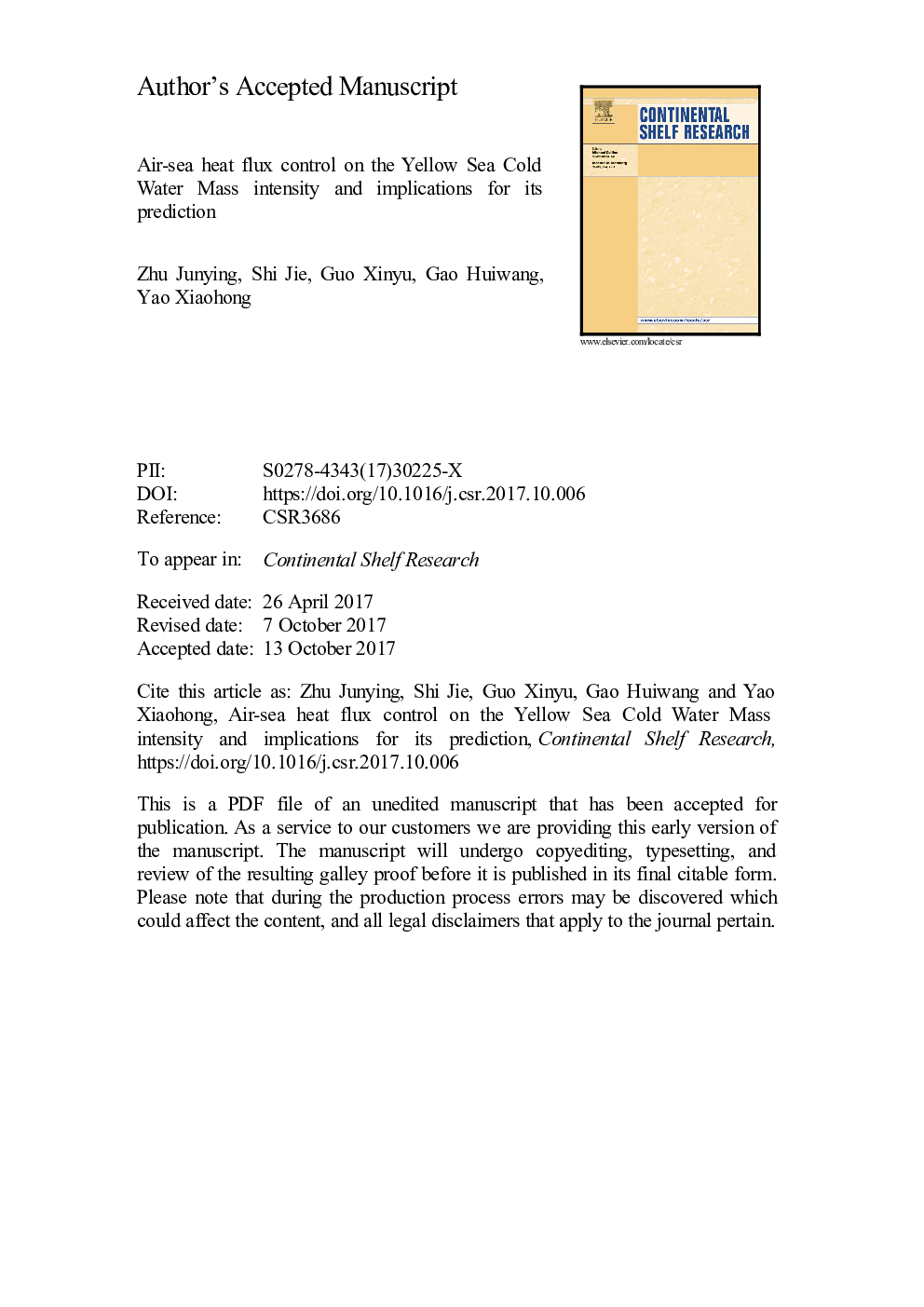| کد مقاله | کد نشریه | سال انتشار | مقاله انگلیسی | نسخه تمام متن |
|---|---|---|---|---|
| 8884105 | 1626061 | 2018 | 37 صفحه PDF | دانلود رایگان |
عنوان انگلیسی مقاله ISI
Air-sea heat flux control on the Yellow Sea Cold Water Mass intensity and implications for its prediction
ترجمه فارسی عنوان
کنترل جریان شار حرارتی در دریای زرد، شدت جرم و پیامدهای پیش بینی
دانلود مقاله + سفارش ترجمه
دانلود مقاله ISI انگلیسی
رایگان برای ایرانیان
کلمات کلیدی
موضوعات مرتبط
مهندسی و علوم پایه
علوم زمین و سیارات
زمین شناسی
چکیده انگلیسی
The Yellow Sea Cold Water Mass (YSCWM), which occurs during summer in the central Yellow Sea, plays an important role in the hydrodynamic field, nutrient cycle and biological species. Based on water temperature observations during the summer from 1978 to 1998 in the western Yellow Sea, five specific YSCWM years were identified, including two strong years (1984 and 1985), two weak years (1989 and 1995) and one normal year (1992). Using a three-dimensional hydrodynamic model, the YSCWM formation processes in these five years were simulated and compared with observations. In general, the YSCWM began forming in spring, matured in summer and gradually disappeared in autumn of every year. The 8 °C isotherm was used to indicate the YSCWM boundary. The modelled YSCWM areas in the two strong years were approximately two times larger than those in the two weak years. Based on the simulations in the weak year of 1995, ten numerical experiments were performed to quantify the key factors influencing the YSCWM intensity by changing the initial water condition in the previous autumn, air-sea heat flux, wind, evaporation, precipitation and sea level pressure to those in the strong year of 1984, respectively. The results showed that the air-sea heat flux was the dominant factor influencing the YSCWM intensity, which contributed about 80% of the differences of the YSCWM average water temperature at a depth of 50 m. In addition, the air-sea heat flux in the previous winter had a determining effect, contributing more than 50% of the differences between the strong and weak YSCWM years. Finally, a simple formula for predicting the YSCWM intensity was established by using the key influencing factors, i.e., the sea surface temperature before the cooling season and the air-sea heat flux during the cooling season from the previous December to the current February. With this formula, instead of a complicated numerical model, we were able to roughly predict the YSCWM intensity for the following summer by using the data available online in winter.
ناشر
Database: Elsevier - ScienceDirect (ساینس دایرکت)
Journal: Continental Shelf Research - Volume 152, 1 January 2018, Pages 14-26
Journal: Continental Shelf Research - Volume 152, 1 January 2018, Pages 14-26
نویسندگان
Junying Zhu, Jie Shi, Xinyu Guo, Huiwang Gao, Xiaohong Yao,
